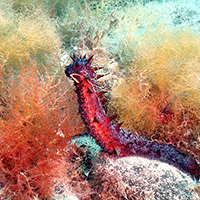 Smart Citations
Smart CitationsSee how this article has been cited at scite.ai
scite shows how a scientific paper has been cited by providing the context of the citation, a classification describing whether it supports, mentions, or contrasts the cited claim, and a label indicating in which section the citation was made.
Biology, ecology and management perspectives of overexploited deposit-feeders sea cucumbers, with focus on Holothuria tubulosa (Gmelin, 1788)
The increasing harvesting of low trophic level organisms is rising concern about the possible consequences on the ecosystem functioning. In particular, the continuous demand of sea cucumbers from the international market lead to the overexploitation of either traditionally harvested and new target species, including the Mediterranean ones. Sea cucumbers are mostly deposit feeders able to consume sedimentary organic matter and, thus, are ideal candidate for the remediation of eutrophicated sediments, like those beneath aquaculture plants. Breeding and restocking of overexploited sea cucumbers populations are well established practice for Indo-Pacific species like Holothuria scabra and Apostichopus japonicus. Some attempts have been also made for the Mediterranean species Holothuria tubulosa, but, so far, the adaptation of protocols used for other species presented several issues. We here summarize narratively the available information about sea cucumbers rearing protocols with the aim of identifying their major flaws and gaps of knowledge and fostering research about new triggers for spawning and feasible protocols to reduce the high mortality of post-settlers.
Downloads
How to Cite
PAGEPress has chosen to apply the Creative Commons Attribution NonCommercial 4.0 International License (CC BY-NC 4.0) to all manuscripts to be published.


 https://doi.org/10.4081/aiol.2021.9995
https://doi.org/10.4081/aiol.2021.9995





